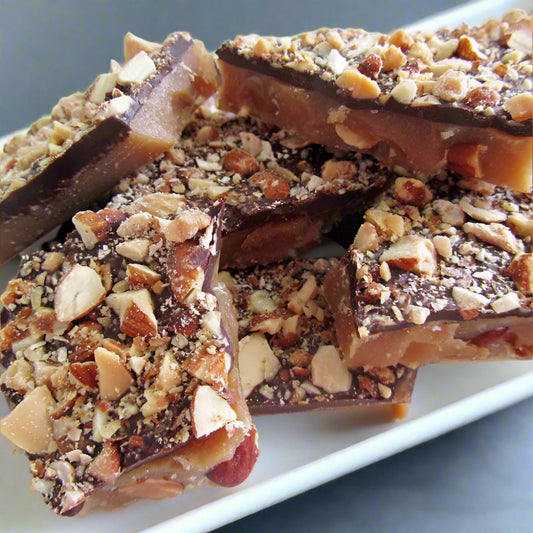
English toffee is a beloved treat that has found its way into the hearts of candy lovers worldwide. But what exactly makes it English toffee, and why is it so distinct from other types of toffee candy? To understand this, we need to explore its origins, unique ingredients, and evolution over time.
The Origins of English Toffee
The term "English toffee" is used to describe a specific type of candy from the United Kingdom. The original English toffee has a rich history dating back centuries. The English people have been known for their confectionery expertise, particularly when it comes to creating rich, buttery treats. Toffee, in its simplest form, is made by melting sugar and butter together. This mixture then hardens into a hard crunchy candy.
So, why the "English" designation? While toffee itself is believed to have originated in the 17th century, England became well-known for producing the candy in large quantities. Over time, the name "English toffee" began to be associated with the specific style of toffee made in the UK. The style from the UK was most represented by the buttery, hard texture that differentiates it from other varieties. English toffee is often considered more refined and sophisticated due to the quality of ingredients and the meticulous crafting process.
The Key Ingredients: Butter, Sugar, and More
What sets English toffee apart from other types of toffee candy is the specific balance of ingredients. Traditional English toffee is made using high-quality butter and sugar, creating a smooth, rich, and melt-in-your-mouth experience. The toffee is typically cooked to a hard, brittle consistency, which gives it a satisfying crunch when bitten into.
While the classic version of English toffee is made with just butter and sugar, many variations exist. These variations are made by including the addition of other delightful ingredients.
One popular version is chocolate-covered toffee. As the name suggests, this variety involves covering the buttery toffee in a rich layer of chocolate. This creates a delightful contrast between the sweet, smooth chocolate and the crunchy, caramelized toffee underneath. This combo has become a beloved favorite for many candy enthusiasts.
Another variation is butter toffee, which is similar but often includes a higher proportion of butter. This gives it an extra creamy, velvety texture. Butter toffee can also be flavored with vanilla, adding an additional layer of complexity to the flavor profile.
The Role of Almonds in English Toffee
For those who enjoy a nutty twist on their sweet treats, almond toffee is a classic variation. In almond toffee, roasted almonds are often mixed into the toffee itself or sprinkled on top. The almonds add an irresistible crunch and earthy flavor that perfectly complements the rich, buttery sweetness of the toffee. The combination of the nutty almonds and the smooth toffee creates a complex taste.
Why the Popularity of English Toffee Endures
Today, English toffee remains a favorite treat around the world. It is particularly popular during the holidays when it’s often given as a gift. The versatility of the candy, which is made with chocolate, butter, and almonds, ensures there’s a version to please everyone. It can be enjoyed on its own, as part of a dessert, or as a topping for ice cream. English toffee’s timeless appeal continues to captivate sweet-tooth enthusiasts everywhere.
So, next time you indulge in a piece of English toffee, remember that its name reflects a centuries-old tradition of candy making. Whether it's chocolate-covered toffee, butter toffee, or almond toffee, there’s no denying that this iconic candy is here to stay.




